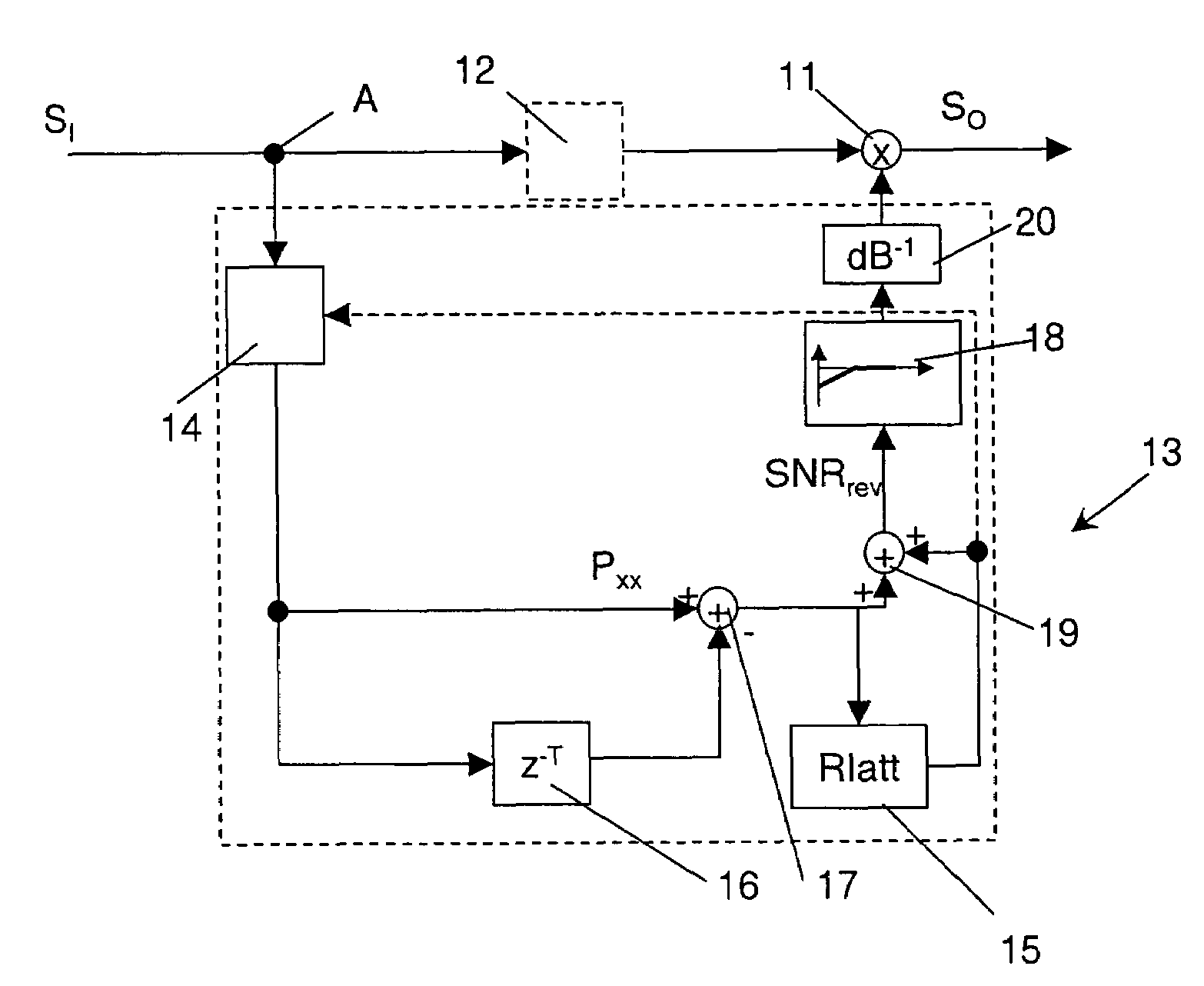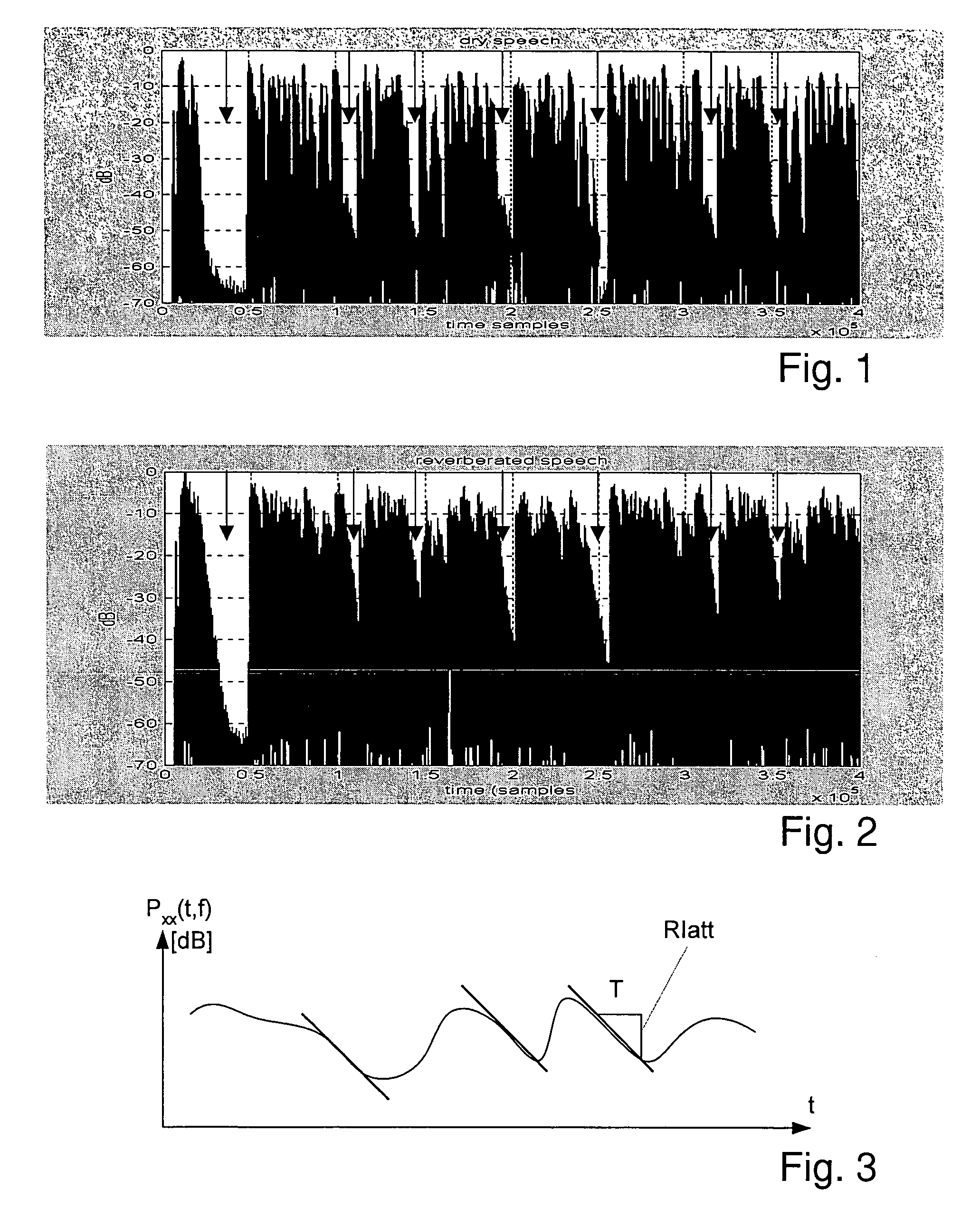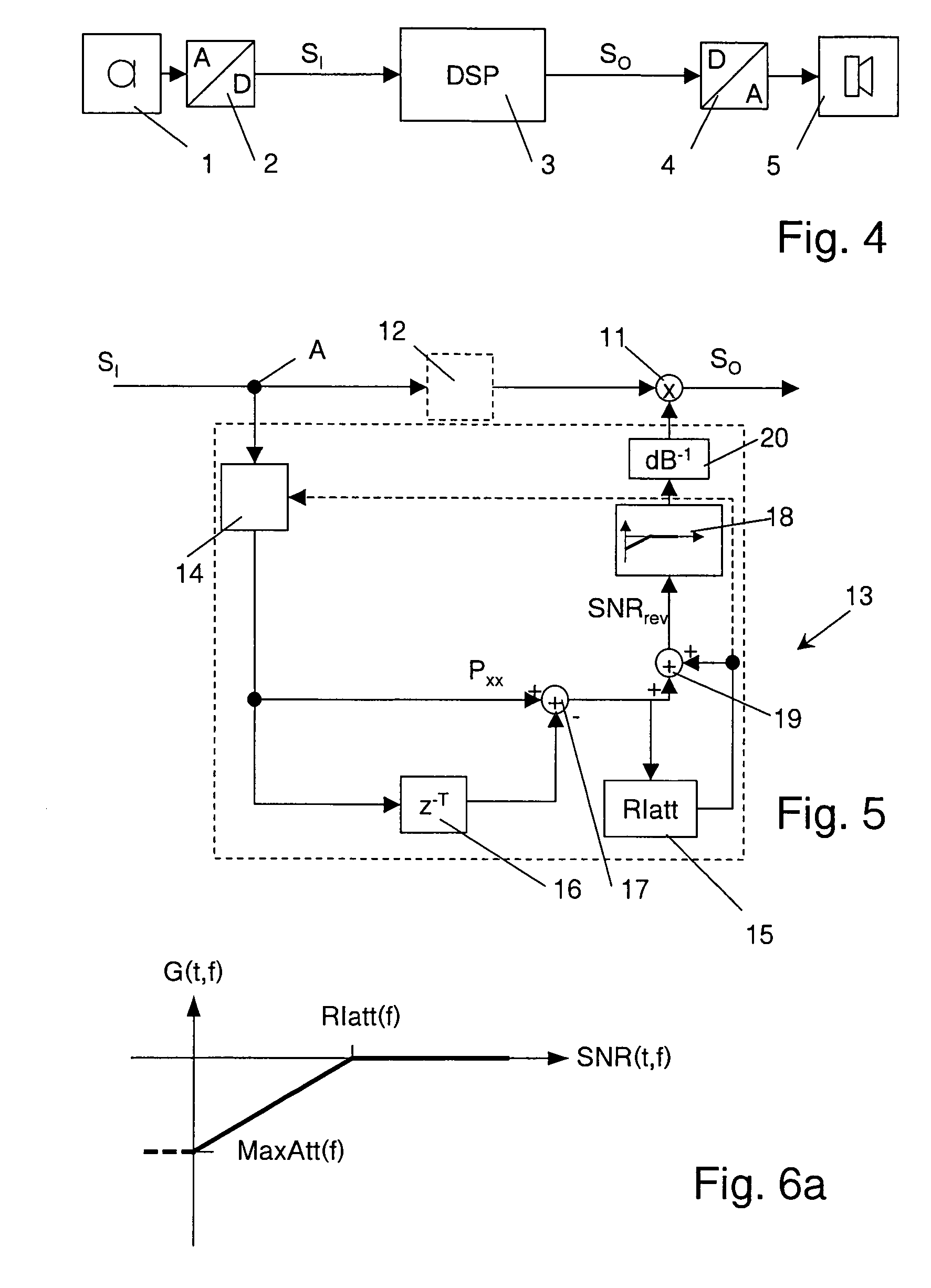Method of processing an acoustic signal, and a hearing instrument
a processing method and acoustic signal technology, applied in the direction of transducer casings/cabinets/supports, electrical transducers, electrical apparatus, etc., can solve the problems of affecting the use of hearing instruments, and requiring far too long delays for hearing instruments (hi). , the effect of computational efficiency
- Summary
- Abstract
- Description
- Claims
- Application Information
AI Technical Summary
Benefits of technology
Problems solved by technology
Method used
Image
Examples
Embodiment Construction
[0050]FIG. 1 depicts, on a logarithmic scale, the signal power of a dry (not reverberated) speech signal as a function of time, showing the nonlinear negative slopes in the speech pauses. In the figure, the speech pauses are pointed out by arrows.
[0051]FIG. 2 shows the corresponding plot of approximately the same speech signal, which however is reverberated. In the speech pauses, the approximately linear negative slopes may be seen. For hearing instrument users, the blurring of speech pauses by reverberation may decrease speech intelligibility.
[0052]An important finding of the invention is, that the maximal negative slope found over such a (properly pre-processed) signal envelope is a good indicator of the reverberation time Tr. In other words, even for immediate drops in the (speech) signal, the reverberated signal will never decay faster than given by Tr. FIG. 3 shows this relation. The power Pxx of a reverberated speech signal in a frequency band f (here, f is a discrete variable...
PUM
 Login to View More
Login to View More Abstract
Description
Claims
Application Information
 Login to View More
Login to View More - R&D
- Intellectual Property
- Life Sciences
- Materials
- Tech Scout
- Unparalleled Data Quality
- Higher Quality Content
- 60% Fewer Hallucinations
Browse by: Latest US Patents, China's latest patents, Technical Efficacy Thesaurus, Application Domain, Technology Topic, Popular Technical Reports.
© 2025 PatSnap. All rights reserved.Legal|Privacy policy|Modern Slavery Act Transparency Statement|Sitemap|About US| Contact US: help@patsnap.com



